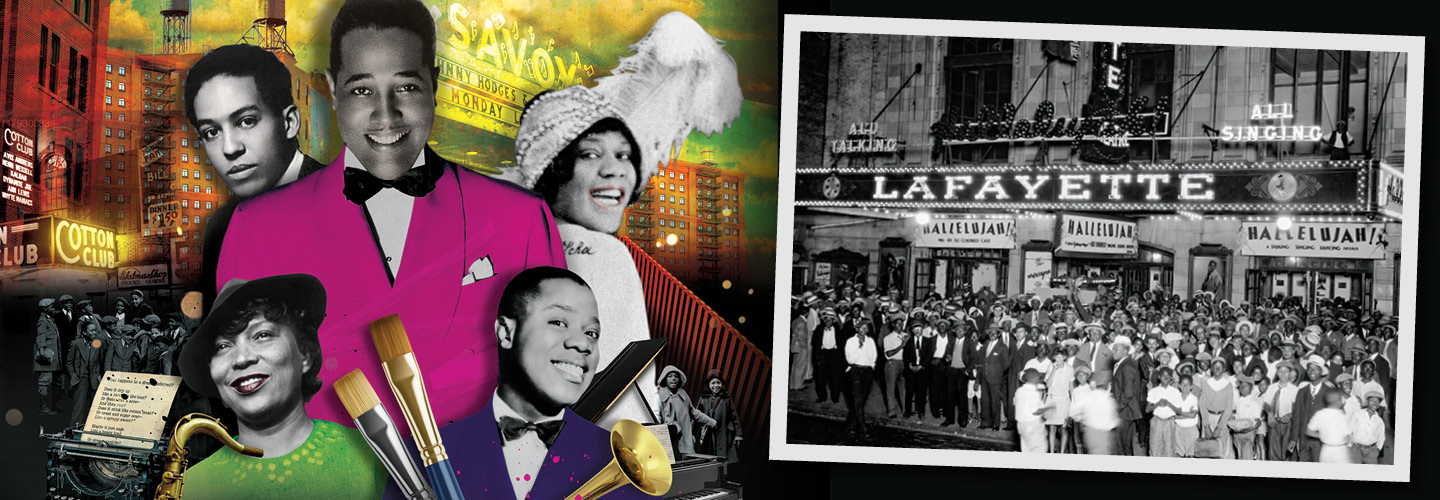The celebrated Black poet Langston Hughes once recalled what it was like to behold Harlem during what we now call the Harlem Renaissance. It was 1921. He was 19 and newly arrived from Missouri, and he’d gotten on a New York City subway train to ride uptown.
“I can never put on paper the thrill of that underground ride to Harlem,” Hughes later wrote. “I went up the steps and out into the bright September sunlight. Harlem! I stood there, dropped my bags, took a deep breath, and felt happy again.”
Amazing things were happening in Harlem in the 1920s. In just a few years, it had been transformed from a sleepy section of upper Manhattan into what was being called the capital of Black America. Its residents had formed a community in which they were creating music, literature, and art that was their own—and also uniquely American. Harlem was the place for an ambitious young Black creator to be.
For generations, Harlem was considered the countryside, a place where wealthy New Yorkers owned estates. But by the late 19th century, immigrants from Germany, Ireland, and other European countries had also settled in the 1.5-square-mile area. Sensing opportunity, real estate developers built houses and apartment buildings in hopes of luring middle-class White families into a freshly created neighborhood.
The celebrated Black poet Langston Hughes once recalled what it was like to behold Harlem during what we now call the Harlem Renaissance. It was 1921. He was 19 and newly arrived from Missouri, and he’d gotten on a New York City subway train to ride uptown.
“I can never put on paper the thrill of that underground ride to Harlem,” Hughes later wrote. “I went up the steps and out into the bright September sunlight. Harlem! I stood there, dropped my bags, took a deep breath, and felt happy again.”
Amazing things were happening in Harlem in the 1920s. In just a few years, it had been transformed from a quiet section of upper Manhattan into what was being called the capital of Black America. Its residents had formed a community. In it, they were creating music, literature, and art that was their own. Their creations were also uniquely American. Harlem was the place for a driven young Black creator to be.
For generations, Harlem was considered the countryside. It was a place where wealthy New Yorkers owned estates. But by the late 19th century, immigrants from Germany, Ireland, and other European countries had also settled in the 1.5-square-mile area. Sensing opportunity, real estate developers built houses and apartment buildings. They hoped to lure middle-class White families into a freshly created neighborhood.

